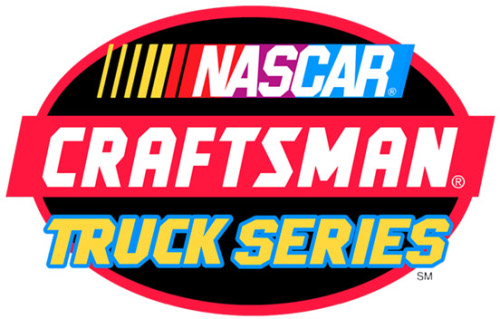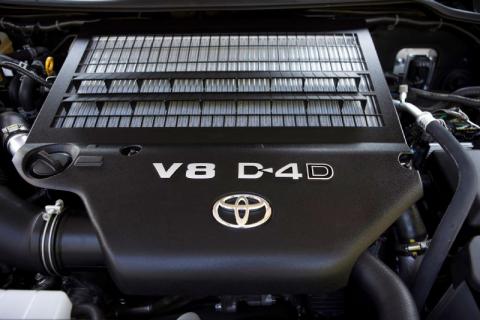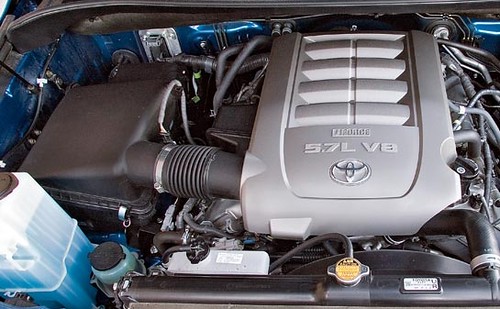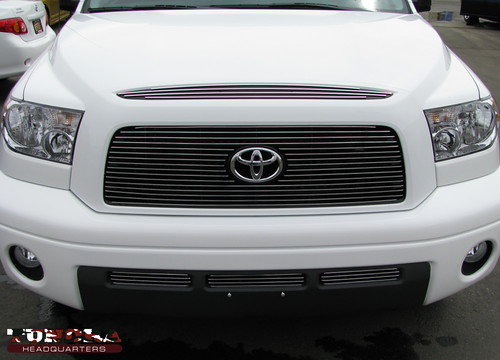
 Author Archive for Jason Lancaster
Author Archive for Jason Lancaster
Jason Lancaster is the editor and founder of TundraHeadquarters.com. He has nearly a decade of experience on the retail side of the auto industry, and another decade of experience of the part and accessory side of the industry.
Ford’s F150 MidBox Is A Smart Idea
Pickup trucks have a lot of cargo space, but that space isn
Search terms people used to find this page:
- tundraheadquarters
Tundra Racing – The Nascar Craftsman Truck Series
The NASCAR Craftsman Truck series is notable not only for the high level of professional racing that can be found at each event, but for the fact that it is the first major NASCAR series to have active participation from a foreign automaker. In 2004 Toyota decided to make a big splash in NASCAR by announcing full factory support for a number of Craftsman Truck teams. The company had always played a major role in motorsports worldwide, with a long history in CART, IMA and NHRA import drag racing, but NASCAR had always been regarded as a ‘domestics-only’ club. After trying things out in the Goody’ Dash series for a number of years, Toyota felt it was time to take the plunge and move up to the big leagues.

Toyota got serious about racing trucks in 2004 when they officially entered the Nascar Craftsman Truck Series (TM).
4.5L Diesel Tundra Confirmed, Bigger Diesel Coming?
Update: Read the complete story of the diesel Tundra
According to Edmunds.com, the Tundra will be offered with a 4.5L diesel V8 for the 2010 model year. While we predicted a diesel for the 2010 model Toyota Tundra a few months ago, Edmunds.com has offered a couple of new points. First, the 4.5L diesel currently being used in the Aussie Land Cruiser is being adapted to the Tundra. We’ve since confirmed this with a couple of Toyota sources we have. Second, Toyota is also planning a larger diesel for an HD version of the Tundra, possibly due out in 2011.

We’ve confirmed that the 4.5L diesel twin-turbo found in the Australian LandCruiser 200 is the basis for the 2010 Tundra Diesel.
Search terms people used to find this page:
- tundraheadquarters
The Tundra’s 5.7 VVT-i System Explained
By now, you have probably heard a mechanic or automotive enthusiast tell you that an engine is basically one large air pump. Basically, the more air an engine can suck in to combine with fuel, the more power it can create through combustion. It also follows that the more efficiently an engine can remove exhaust gases from the cylinders, the better it can manage that power. Air flow from one end to the other is key to a healthy, strong engine.

The powerful 5.7L V8 features dual VVT-i technology.
Air flow is affected by many different components in the motor, but the valves in the cylinder head are what directly control the amount of air entering a cylinder and the volume of exhaust gases leaving it. The intake valves open up just prior to combustion in order to allow air to flow in and mix with fuel, and the exhaust valves open after the ignition of this mixture in order to suck out the resulting gases. The timing of the valves is controlled by a rotating shaft called the camshaft. The camshaft has lobes which push up on the valves in order to open them and drop them back closed again. How long these valves remain open, and at what point in the combustion cycle, can have a big impact on the drivability and power generated by an engine.
Search terms people used to find this page:
- https://tundraheadquarters com/the-tundras-57-vvt-i-system-explained/
Tundra Carriage Works Billet Grille Review
As part of our “Tundra USA” project Tundra build, we contacted Carriage Works about reviewing a set of their billet grilles. Quick to respond, Carriage Works sent us a complete set of grilles (top, main, and bumper) for the 2007-and-up Tundra. After we installed them, in a word, “suhweet.”

The installed product looks awesome – very sharp.

